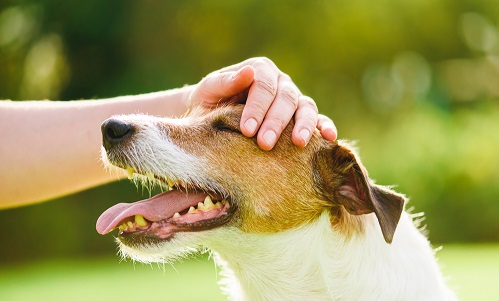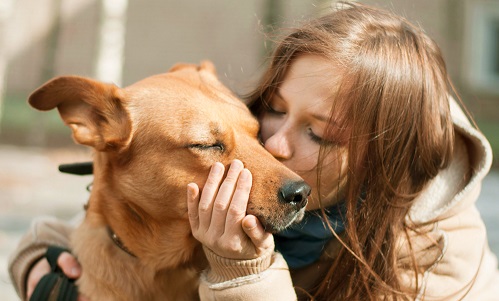Mental illness can be debilitating, life-altering. Whether it’s a minor issue or something more severe, left unaddressed and untreated, such conditions are only likely to worsen. But mental illness doesn’t just impact people. It can also affect your pets.
If you have ever wondered, can dogs have mental disorders? The answer to that is yes.
Dogs get bored, just like humans, and it’s important to have fun things to do with your dog at home to keep their spirit, mood, and behavior up and healthy.
Today, we’ll discuss everything you, as a pet owner, need to know.
Canine Communication and Mental Illness
Sadly, your furry friend lacks the ability to clearly communicate what he’s feeling at any given time. Although your pup can bark, whine, growl, and perform other types of vocalization, those are, at best, general indicators of whatever’s going on in his head.
As many dog owners know, auditory cues only go so far. This makes it difficult to diagnose canine mental disorders in the same way you would with a human. But, even though they can’t lay down on a psychologist’s couch and talk about their anxious thoughts, dogs can and do communicate such sentiments through their actions.
In most cases, doggy mental illness will manifest as a behavioral problem. Therefore, as a pet owner, you have to become part anthropologist, part interpreter. By paying close attention to your dog’s actions and habits, you can better understand his general temperament and determine if there are more deep-seated mental issues.
Can Dogs Get Mental Illnesses—What Are the Causes?
The underlying causes of mental illness are nebulous. Scientists, researchers, and doctors are still trying to better understand why mammalian brains function as they do.
In some cases, mental illness may result from genetics and chemical imbalances, such as bipolarism. In other cases, there may be some negative experience that triggers the onset of a mental disorder. And then there are still others that may be chalked up to some combination of genetics, environment, and experience.
If you have a rescue dog, it may have dealt with a traumatic experience with a previous owner that altered his worldview. Or, you may have a brand new puppy that simply manifested troubles from day one.
Types of Canine Mental Illness/Behavioral Issues
Although we do not fully understand the reasons why dogs suffer from mental illness, we can categorize the more common behavioral issues, including:
Unease
The American Veterinary Medical Association estimates that many dogs taken to animal behaviorists are diagnosed with nervousness or unease, the most common being sourced from worries about separation. 1Most cases of doggy unease will fall under one of three categories:2
#1 Fear-Related Unease
It’s normal for dogs to experience fear. It’s often a healthy reaction to an actual or perceived threat, and unease is a natural response to an agitating experience. However, some dogs—across all breeds—deal with exaggerated fear responses. The most common fears include:
- Other dogs
- Unfamiliar people, especially those that look or smell different from humans the dog is accustomed to
- External stimuli
- Loud noises like fireworks, gunshots, construction work
- Visual stimuli like hats or umbrellas
- New environments like the vet, groomer, or boarding kennel
- Surfaces like wood floors or tile
In some cases, a dog may have a generalized fear where it manifests a frightened reaction to an array of situations that other dogs would likely not react to.
And what are common fear responses you should be on the lookout for? They include:
- Panting
- Salivating
- Whining
- Tucked tail
- Lowered ears
- Averted eyes
- A low body posture
- Trying to escape
- Aggression
#2 Separation Unease
The American Kennel Club estimates that 14% of dogs experience unease with separation.3 This occurs when a dog is unable to get comfortable when left alone or separated from his owners. Separation unease may be a primary condition that develops over time as a puppy ages. Or, it could be a secondary problem caused by a change in the dog’s routine, owner, or environment.
A dog that has separation issues will often crave constant contact with his owner. It may want to be held, pet, or simply leaned up against its master at all times. Typically, a pup suffering from this kind of worry will start to exhibit signs of distress as the owner gets ready to leave. After being left alone for 15-30 minutes, the dog may fully engage in a series of behaviors, including:
- Urinating and/or defecating in the house
- Destructive behavior like destroying furniture
- Incessant barking
- Distress vocalization
- Pacing
- Restlessness
- Repetitive and compulsive behaviors
After the owner has returned, the dog will likely be overly excitable, making it difficult to calm him down.
#3 Age-Related Unease
As the name suggests, this is an issue typically associated with older dogs suffering from the effects of aging. As dogs age, they may experience a noticeable decline in:
- Vision
- Hearing
- Memory
- Learning
- Perception
- Awareness
All pups are incredibly reliant on their senses. So, as those vital faculties diminish, it’s only natural for a canine to experience worry or confusion—especially in an unfamiliar setting or when there are fear-inducing stimuli.
Low Mood
From what researchers can tell, low mood in dogs tends to be different compared to humans. For dogs, low mood is usually caused by a specific traumatic event. According to Dr. Sinn of the American Kennel Club:4
It could be the loss of an owner, the loss of a buddy that they have grown up with, or a huge lifestyle change—a big move, or the addition or subtraction of key members of their social group. It tends to be context-specific…people should look at their dog’s basic environmental and social circumstances to understand what may have brought about the changes in their behavior.
But how do you know if your dog is feeling low?
One of the more common symptoms is a change in the dog’s demeanor. He may forgo activities he once loved—be it going for a daily walk or playing fetch. Other signs of a low mood include:
- A lack of appetite
- Inactivity
- Constant sleeping
- Not engaging
- Isolation
Over-Energetic Behavior
On the flip side, some dogs may be too energetic. Dogs that suffer from over energetic behaviors may be distractible, fidget constantly, impulsive, and have trouble paying attention to a task. This may cause them to manifest poor behaviors, such as:
- Being over aggression
- Engaging in destructive behavior
- Being difficult to train
- Poorly socializing with other dogs
- Being overly attention-seeking
According to the Merck Manual,1 “It may be particularly difficult to train such dogs to behaviorally settle. There may also be signs of sympathetic activity even at rest (eg, increased heart and respiratory rate, vasodilation).”
This issue tends to be exaggerated in certain breeds that are already considered active dogs, such as the Border Collie, Golden Retriever, Jack Russell Terrier, and Siberian Husky.
Abnormal Repetitive Behaviors
Certain dogs will engage in abnormal repetitive behaviors. But this is a broad category that may have different pathogenesis. So, it’s difficult to identify a specific condition until a veterinarian diagnosis. Common compulsive activities include:
- Rhythmic barking
- Incessant barking
- Pacing
- Circling
- Acral lick dermatitis
- Flank sucking
- Chewing on objects
- Self-mutilation
What is CBD?
Cannabidiol (CBD) is one of more than one hundred naturally occurring compounds found in the cannabis plant—specifically, the hemp plant. This compound is legal nationwide and generally considered safe to use for both humans and dogs. Unlike marijuana, CBD doesn’t contain the psychoactive compound THC, which causes the tell-tale marijuana high.
Canna-Pet for Your Dog
At Canna-Pet, every one of our CBD hemp oil products is safe, natural, and veterinarian recommended. Each formulation uses organic whole-plant hemp blends and high-quality ingredients. From CBD drops to capsules and dog treats, our doggy products are designed to help your canine companion live its best life.
Want to discover more? Contact us today!
Sources:
- Insider. Some dogs may develop separation anxiety when their owners return to work, so we asked experts how to prevent it. https://www.insider.com/prevent-separation-anxiety-in-dogs
- Merck Veterinary Manual. Behavioral Problems of Dogs. https://www.merckvetmanual.com/behavior/normal-social-behavior-and-behavioral-problems-of-domestic-animals/behavioral-problems-of-dogs
- AKC. Understanding, Preventing, and Treating Dog Anxiety. https://www.akc.org/expert-advice/health/treating-dog-anxiety/
- AKC. How To Know If Your Dog Is Depressed? https://www.akc.org/expert-advice/health/how-to-know-if-your-dog-is-depressed/
- VCA Hospitals. Compulsive Disorders in Dogs. https://vcahospitals.com/know-your-pet/compulsive-disorders-in-dogs







